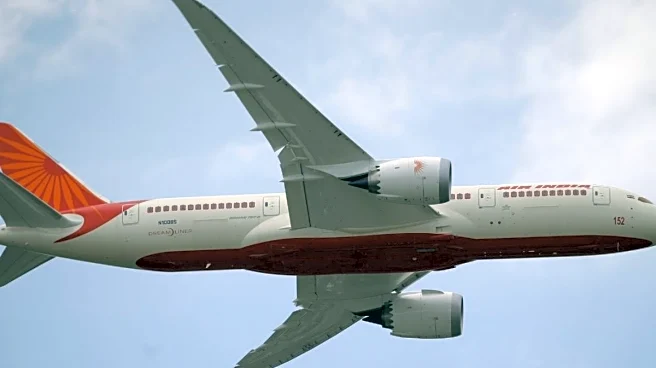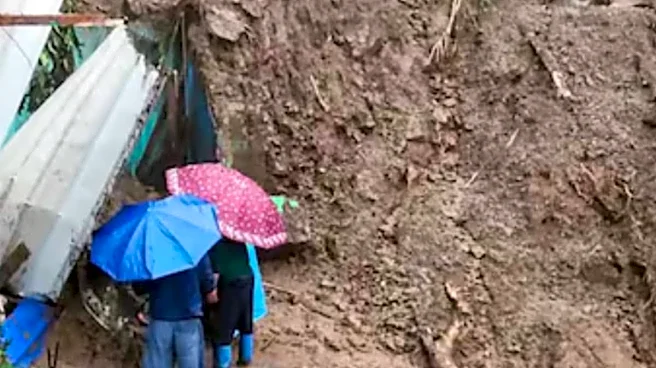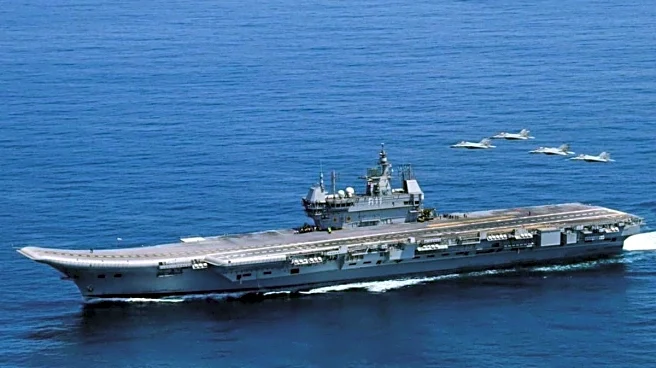What is the story about?
Aviation regulator DGCA has initiated a detailed investigation into the automatic deployment of the Ram Air Turbine (RAT) on an Air India Boeing 787-8 Dreamliner from Amritsar to Birmingham shortly before landing on October 4, officials have confirmed.
The RAT, a small turbine that deploys to generate emergency power during dual engine, electrical or hydraulic failures, was activated when the aircraft was around 400 feet above the ground, a senior DGCA official said.
The official added that the pilot did not report any abnormality, and maintenance checks recommended by Boeing for uncommanded RAT deployment have been completed. "No discrepancies were observed, and the aircraft is being released for service," the official said.
Also read | Air India mid-air flight scare: Plane lands safely in UK, grounded for checks
The Directorate General of Civil Aviation will, however, carry out a detailed probe to determine why the RAT deployed despite all systems functioning normally.
Air India confirmed the incident in a statement, saying that the aircraft -- operating flight AI117 from Amritsar to Birmingham on October 4 landed safely.
“All electrical and hydraulic parameters were found normal, and the aircraft performed a safe landing at Birmingham,” the airline said.
The incident comes amid heightened scrutiny of Air India’s Boeing 787 fleet following the June 12 crash of flight AI171, also involving a Dreamliner, in which 260 people were killed.
Also read | Pilots’ body urges DGCA to probe All 787 fleet after Air India RAT incident
Earlier on October 5, the Federation of Indian Pilots (FIP) urged the aviation regulator to conduct a comprehensive inspection of the electrical systems across all Boeing 787 aircraft operating in India. The demand was made after the unexpected deployment of the Ram Air Turbine.
In a letter to the DGCA, FIP President GS Randhawa said the Aircraft Health Monitoring (AHM) system detected a fault in the Bus Power Control Unit (BPCU), a component that manages an aircraft's electrical power system which may have triggered the RAT’s automatic deployment.
The RAT, a small turbine that deploys to generate emergency power during dual engine, electrical or hydraulic failures, was activated when the aircraft was around 400 feet above the ground, a senior DGCA official said.
The official added that the pilot did not report any abnormality, and maintenance checks recommended by Boeing for uncommanded RAT deployment have been completed. "No discrepancies were observed, and the aircraft is being released for service," the official said.
Also read | Air India mid-air flight scare: Plane lands safely in UK, grounded for checks
The Directorate General of Civil Aviation will, however, carry out a detailed probe to determine why the RAT deployed despite all systems functioning normally.
Air India confirmed the incident in a statement, saying that the aircraft -- operating flight AI117 from Amritsar to Birmingham on October 4 landed safely.
“All electrical and hydraulic parameters were found normal, and the aircraft performed a safe landing at Birmingham,” the airline said.
The incident comes amid heightened scrutiny of Air India’s Boeing 787 fleet following the June 12 crash of flight AI171, also involving a Dreamliner, in which 260 people were killed.
Also read | Pilots’ body urges DGCA to probe All 787 fleet after Air India RAT incident
Earlier on October 5, the Federation of Indian Pilots (FIP) urged the aviation regulator to conduct a comprehensive inspection of the electrical systems across all Boeing 787 aircraft operating in India. The demand was made after the unexpected deployment of the Ram Air Turbine.
In a letter to the DGCA, FIP President GS Randhawa said the Aircraft Health Monitoring (AHM) system detected a fault in the Bus Power Control Unit (BPCU), a component that manages an aircraft's electrical power system which may have triggered the RAT’s automatic deployment.
Do you find this article useful?
/images/ppid_59c68470-image-175967753512631297.webp)


/images/ppid_59c68470-image-175948753106378416.webp)

/images/ppid_59c68470-image-175967003607331198.webp)









/images/ppid_59c68470-image-175965006501047306.webp)